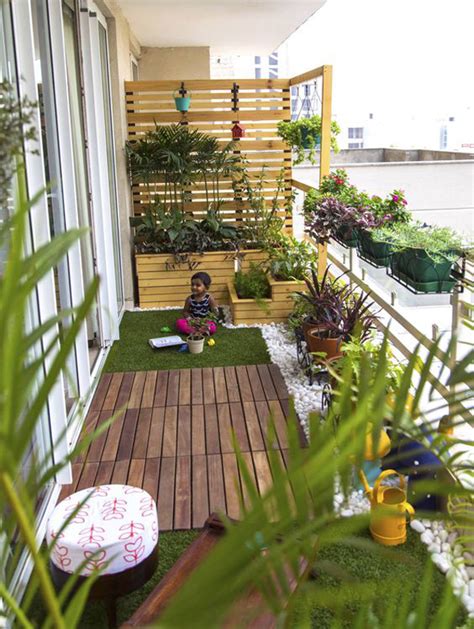Creating a Safe and Fun Child-Friendly Balcony Garden: Urban Gardening Tips for Families
Balcony gardens offer a fantastic way for families to engage in child-friendly gardening, providing not only an outlet for creativity and outdoor play but also a great opportunity for children to learn about nature. This guide explores how to transform your balcony into a safe, educational, and enjoyable space for the whole family, with a focus on container gardening, plant selection, and safety considerations to ensure a successful urban gardening experience.
Introduction
For families living in urban environments, outdoor spaces are often limited. Yet, with a bit of imagination and effort, balconies can be converted into vibrant, functional, and safe gardens where children can explore, learn, and play. Gardening tips tailored to creating a child-friendly balcony garden will not only foster an appreciation for nature but also encourage family bonding through shared activities. This article covers practical advice on how to build such a garden, focusing on key concepts like safety, educational value, and the best plants to grow.
Key Concepts
- Safety First: Designing a balcony garden means addressing safety concerns such as railings, plant toxicity, and secure containers.
- Educational Activities: Engage children with hands-on experiences like planting seeds, watering, and tracking plant growth.
- Container Gardening: Limited space calls for smart use of containers and vertical gardening to maximize growing potential.
- Creativity and Fun: Encourage children to personalize the garden with decorations, DIY projects, and playful layouts.
Historical Context
Urban gardening, though currently in vogue, dates back centuries. From ancient rooftop gardens in Babylon to modern city farms, people have long sought to cultivate green spaces in crowded urban areas. In recent decades, the resurgence of interest in gardening has led to increased attention on how to make small spaces, such as balconies, more productive and family-friendly. Historical examples show that gardening in small spaces often sparks creativity, making it an ideal outlet for child-friendly gardening.
Current State Analysis
Today’s urban families are increasingly looking for ways to incorporate nature into their daily lives. With concerns over screen time and lack of outdoor play, many parents are turning to balcony gardening as a solution. However, the challenges of creating a safe environment for children, while also selecting suitable plants and materials for limited spaces, remain significant. Research shows that families who engage in outdoor play and gardening experience better mental and physical health. The current trend reflects a growing awareness of the need to bring nature into city life for both children and adults.
Practical Applications
To create a child-friendly balcony garden, follow these practical steps:
- Plan the Layout: Choose a section of the balcony with sufficient sunlight and where children can safely play without risk of falling. Install barriers or nets on railings for added safety.
- Pick the Right Containers: Use sturdy, child-safe containers. Opt for pots with rounded edges and ensure they are well-secured to prevent tipping.
- Select Safe Plants: Avoid toxic plants like oleander or nightshade. Instead, choose child-safe varieties such as sunflowers, nasturtiums, and strawberries.
- Incorporate Educational Elements: Set up a mini-compost station or introduce insects like ladybugs to teach children about the ecosystem.
- Engage Creativity: Allow kids to paint pots, label plants, or build small garden ornaments to foster their creative expression.
Case Studies
| Family | Challenges | Solutions | Outcome |
|---|---|---|---|
| The Smiths | Limited space on a small balcony | Utilized vertical gardening and hanging planters | Increased planting capacity and created a safe play space |
| The Garcias | Concerns about plant safety for young children | Chose non-toxic, easy-to-maintain plants like herbs and strawberries | Child-friendly and productive garden with educational value |
| The Lees | Balcony lacked sunlight | Selected shade-tolerant plants like ferns and begonias | Flourishing garden that encourages regular outdoor play |
Stakeholder Analysis
Creating a child-friendly balcony garden involves several stakeholders:
- Parents and Guardians: They are the primary facilitators of the garden, ensuring it is both educational and safe.
- Children: The primary users who benefit from the creative and educational opportunities the garden provides.
- Local Communities: Balcony gardens can positively affect urban environments by contributing to local biodiversity and aesthetics.
Implementation Guidelines
Follow these steps to implement a child-friendly balcony garden:
- Evaluate Space: Measure your balcony and consider sunlight exposure.
- Safety Measures: Install safety features such as railing nets or tall barriers.
- Start Small: Begin with easy-to-grow plants like tomatoes, herbs, or flowers that children can easily maintain.
- Monitor Regularly: Regularly check plants for pests and ensure that containers remain securely fastened.
Ethical Considerations
When creating a child-friendly garden, it’s essential to choose environmentally sustainable products. Avoid using harmful pesticides or fertilizers, and instead, opt for organic options. Additionally, consider the impact of your garden on local wildlife—balcony gardens can serve as micro-habitats for bees, butterflies, and other pollinators, which contributes to a healthier urban ecosystem.
Limitations and Future Research
While balcony gardens offer numerous benefits, they are not without limitations. Space restrictions, limited sunlight, and the need for regular maintenance can pose challenges. Future research might explore ways to optimize small spaces for larger plant growth, as well as innovations in self-watering containers and kid-friendly irrigation systems. Additionally, studies on the long-term educational benefits of child-friendly balcony gardens could provide further insights.
Expert Commentary
Gardening experts agree that involving children in the process of growing plants on balconies not only fosters creativity but also builds important life skills. Urban gardening is more than just a trend; it is becoming a way of life for many city dwellers. With thoughtful planning and safe practices, families can create thriving balcony gardens that offer educational and bonding experiences. As urban spaces continue to shrink, finding innovative ways to bring nature into our homes will remain a crucial topic.


